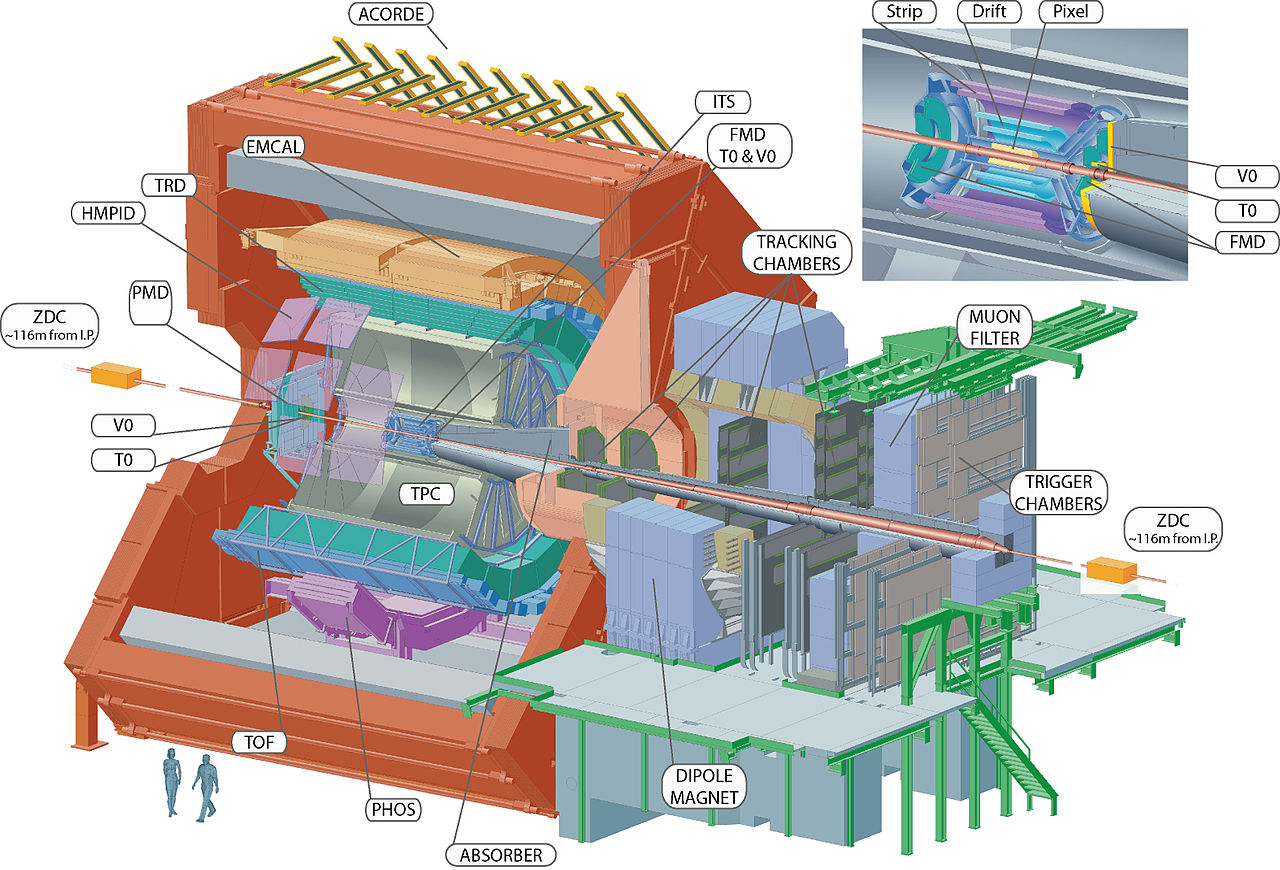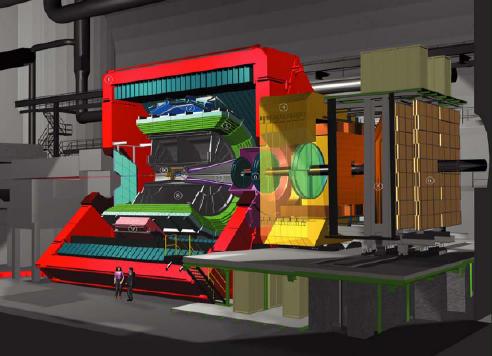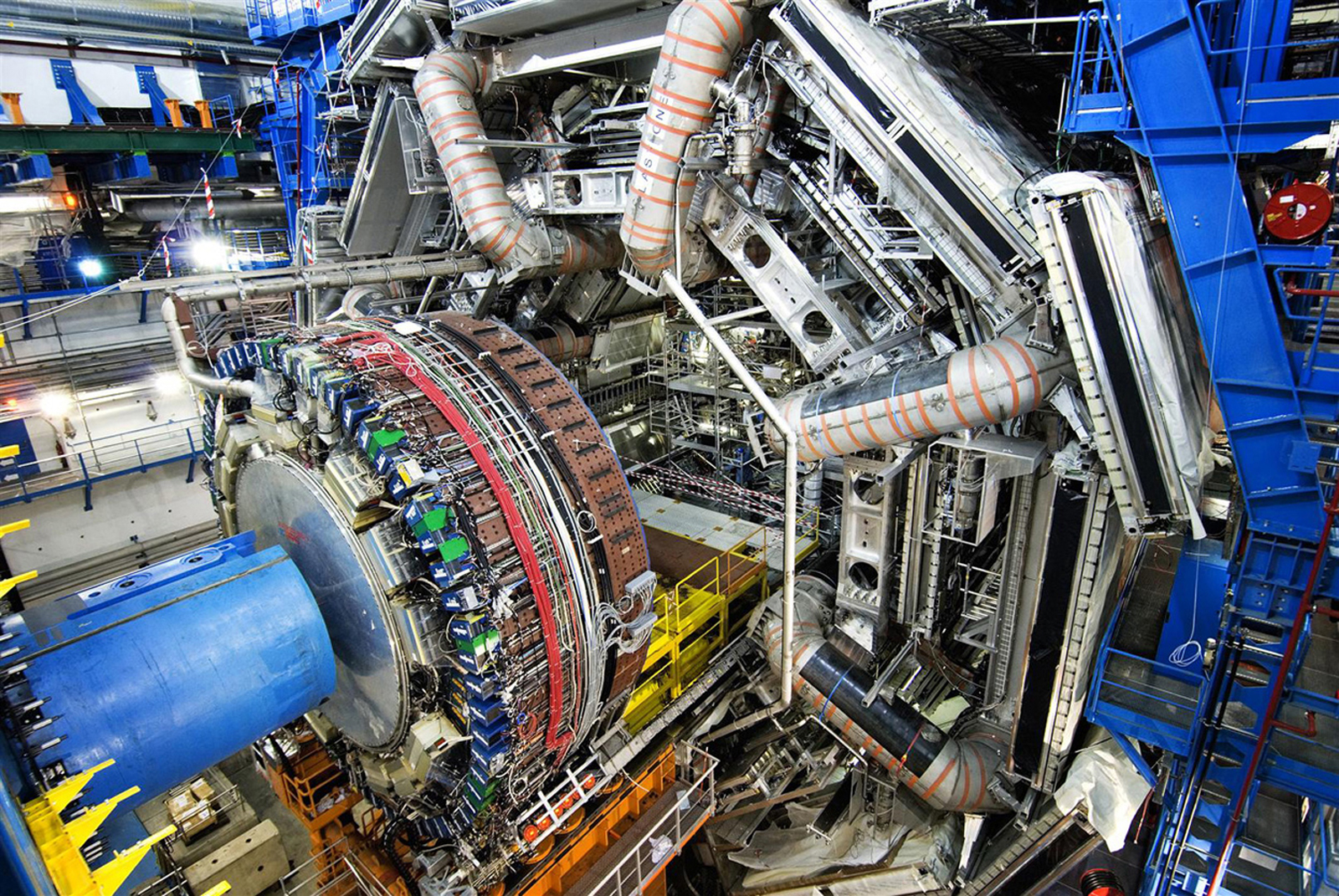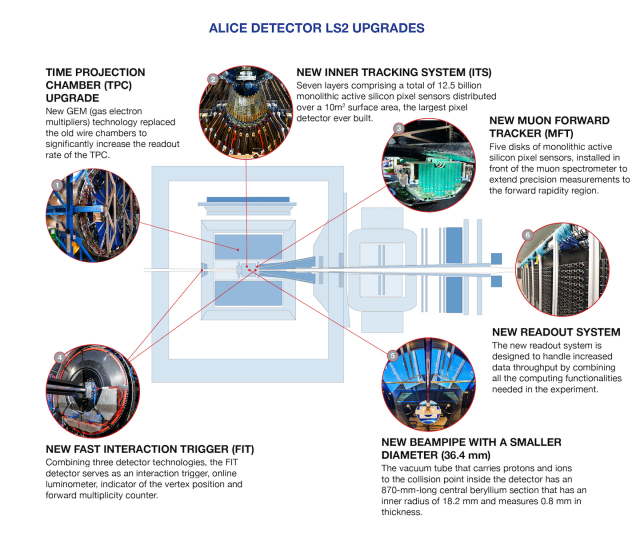Taking a closer look at LHC
Lead ions are produced from a highly purified lead sample heated to a temperature of about 550°C. The lead vapour is ionized by an electron current. Many different charge states are produced with a maximum around Pb27+. These ions are selected and accelerated to 4.2 MeV/u (energy per nucleon) before passing through a carbon foil, which strips most of them to Pb54+. The Pb54+ beam is accumulated, then accelerated to 72 MeV/u in the Low Energy Ion Ring (LEIR), which transfers them to the PS. The PS accelerates the beam to 5.9 GeV/u and sends it to the SPS after first passing it through a second foil where it is fully stripped to Pb82+.
The SPS accelerates it to 177 GeV/u then sends it to the LHC, which accelerates it to 2.76 TeV/u.
The detector consists of two main components: the central part composed of detectors dedicated to the study of hadronic signals and electrons, and the forward muon spectrometerdedicated to the study of quarkonia behaviour in dense matter.
The central part is embedded in a large solenoid magnet with a weak field (full current of 6000 amps and magnetic field of 670 millitesla). The innermost part of the detector is the tracking system, which consists of the inner tracking system (ITS) and the outer tracking system (TPC).
TPC is the principal component of ALICE and it's a time projection chamber. A cylindrical device filled with gas and incorporating uniform electric and magnetic fields, a TPC is ideal for separating, tracking, and identifying thousands of charged particles in a dense environment — such as the thousands of particles produced in an energetic heavy-nuclei collision. It is the main detector in many high-energy physics experiments.

More information here...
At each Long Shutdown (LS) the various accelerators, detectors and other devices undergo major maintenance, consolidation and upgrade operations.
ALICE had some of the most major experimental upgrades during the long shutdown (LS2). These upgrades will not only prepare ALICE for LHC Run 3, but also for the planned HL-LHC.
A major renovation was the replacement of ALICE’s TPC (Time-projection chamber). The new ALICE TPC, which is based on nine years’ worth of R&D, is projected to accumulate 50 times more heavy-ion collision data in the upcoming LHC Run 3 than in Runs 1 and 2 combined.
ALICE scientists also designed, built and installed a new Inner Tracking System, a detector that sits close to the point where particles collide. ALICE’s inner tracking system is made from silicon wafers, the same type of sensor material used to make digital cameras. The new detector will significantly increase the resolution of the “pictures” ALICE takes of particle collisions. It has a surface area of 10 square meters, making it the largest pixel detector ever built.
[These comments are taken from What’s new for LHC Run 3? By Sarah Charley. Symmetry (A joint Fermilab/SLAC publication)]
In more detail we can see the improvements made to this detector during the LS2 in the following image:
All information in Alice Upgrades LS2
The image at the bottom of the DETECTORS Section shows some of those performed on the larger detectors during LS2 (2019-2022).
Two other major upgrades are carried out during the long shutdown LS3: FoCal and ITS3.
During the LHC long shutdown, which takes place from 2027 to 2029, two upgrades to the ALICE detector are installed. The first is an upgrade of the three innermost layers of the Internal Tracking System (ITS3), and the second is a new forward calorimeter (FoCal).

Alice collaboration: 40 countries, 171 institutes, 2017 members
|
AUTHORS Xabier Cid Vidal, PhD in experimental Particle Physics for Santiago University (USC). Research Fellow in experimental Particle Physics at CERN from January 2013 to Decembre 2015. He was until 2022 linked to the Department of Particle Physics of the USC as a "Juan de La Cierva", "Ramon y Cajal" fellow (Spanish Postdoctoral Senior Grants), and Associate Professor. Since 2023 is Senior Lecturer in that Department.(ORCID). Ramon Cid Manzano, until his retirement in 2020 was secondary school Physics Teacher at IES de SAR (Santiago - Spain), and part-time Lecturer (Profesor Asociado) in Faculty of Education at the University of Santiago (Spain). He has a Degree in Physics and a Degree in Chemistry, and he is PhD for Santiago University (USC) (ORCID). |
CERN CERN Experimental Physics Department CERN and the Environment |
LHC |
IMPORTANT NOTICE
For the bibliography used when writing this Section please go to the References Section
© Xabier Cid Vidal & Ramon Cid - rcid@lhc-closer.es | SANTIAGO (SPAIN) |





